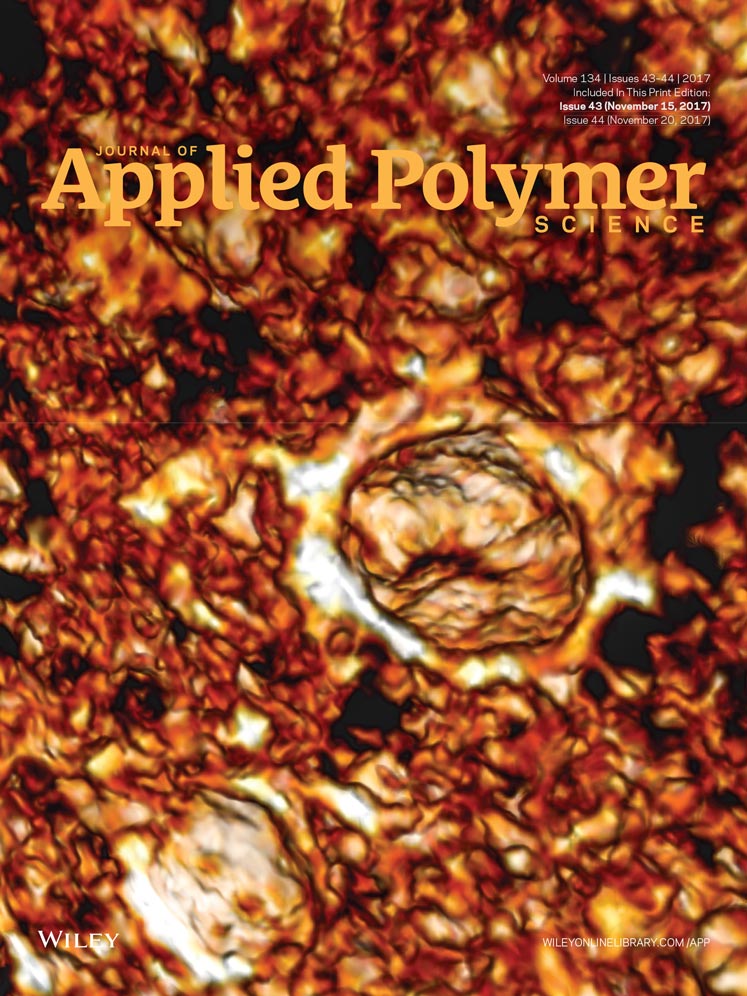Molecular weight controlled poly(amic acid) resins end-capped with phenylethynyl groups for manufacturing advanced polyimide films
ABSTRACT
To investigate the effect of reactive end-capping groups on film-forming quality and processability, a series of molecular weight-controlled aromatic poly(amic acid) (PAA) resins functionalized with phenylethynyl end groups were prepared via the polycondensation of 3,3′,4,4′-biphenyltetracarboxylic dianhydride (BPDA), para-phenylenediamine (PDA), and 4-phenylethynyl phthalic anhydride (PEPA) served as molecular-weight-controlling and reactive end capping agent. The PAA resins with relatively high concentrations endow enhanced wetting/spreading ability to form PAA gel films by solution-cast method which were thermally converted to the fully-cured polyimide (PI) films. The mechanical and thermal properties of PI films were investigated as a function of PAA molecular weights (Mn) and thermal-curing parameters. Mechanical property, dimensional stability and heat resistance of the fully-cured PI films with PAA Mn > 20 ×103 g mol−1 are found to be better than that of their unreactive phthalic end-capped counterparts. The covalent incorporation of chain-extension structures in the backbones, induced by thermal curing of phenylethynyl groups, might facilitate yielding a higher degree of polymer chain order and consequently improved resistance strength and elongation at break to tensile plastic deformation. © 2017 Wiley Periodicals, Inc. J. Appl. Polym. Sci. 2017, 134, 45168.




